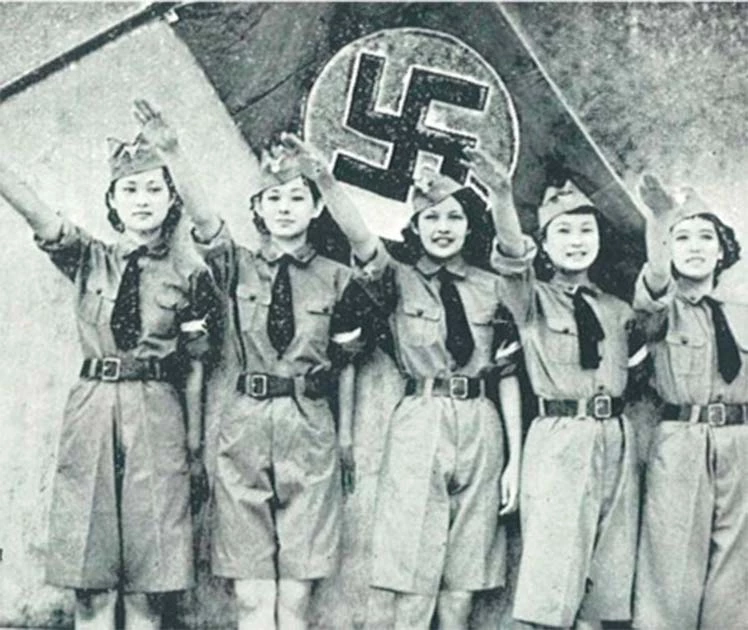Why did so many ordinary German people allow the Nazi takeover of the 1930s, and the atrocities that followed, to happen? This is a question that countless history teachers have been asked over the years, and there are no easy answers.
In 1967 one young American teacher attempted to show, rather than tell his students. His unique teaching experiment, now known as the “Third Wave Experiment,” morphed into a gripping societal commentary that is still studied to this day. It showed with terrifying clarity how any nation, however civilized, can quickly fall to fascist ideology. It took his school less than five days.
Day One: Let’s Play A Game
How do you teach the young and impressionable about the insidious dangers of fascism? This is the question 25-year-old history teacher Ron Jones found himself asking in 1967.
He had been teaching his students at Cubberley High School in Palo Alto, California about the evils of the Holocaust when a student asked him a question, he found himself struggling to answer: How could so many normal Germans have allowed so much evil to happen?
Jones was lost for words, so he decided to carry out an experiment with his class. He was already known as the school’s “cool” teacher, respected for his unusual teaching style. What started out as a game quickly evolved into something very different.

The experiment began with slight changes to Jones’s usual laid-back style of classroom management. He started the lesson by walking in and writing “Strength Through Discipline” on the classroom chalkboard. He then introduced the new classroom rules.
Students must sit upright throughout the class. When asking or answering a question they had to stand up and speak in sentences of three words or less. Whenever they spoke to him, they had to use the preface Mr. Jones each time.
At this point, Jones only planned on making the experiment a one-day thing to show his students how easy it is to indoctrinate strict discipline. Even he was surprised by how quickly his students responded to his new rules.
Day Two: All Hail Mr. Jones
On day two Jones was shocked to find his students were still following the rules from the day before. As he walked into his classroom, they all stood and chanted “Good Morning Mr. Jones” in unison. Seeing an opportunity, the unorthodox teacher decided to expand his experiment.
- The Tuskegee Experiment: Killing For Science?
- Emotional Trauma: The Murray Experiment and the Unabomber
He went to the board and added, “Strength Through Community.” It was then that he told his students the name of his new movement and the meaning behind it. It was called “The Third Wave” and took its name from surfer culture: surfers always choose to ride the third wave, which is the strongest.
He then taught his students a special salute, a cupped hand raised next to the head with a bent elbow, that they could use to spot other members of his movement. They were told that they had to use the salute whenever they saw each other, including when out of school.
Jones then kicked things up a notch. Each student was given a special assignment, whether it be designing a banner for the movement, stopping non-members from entering his class, or recruiting their friends to join the Third Wave.

He also handed out index cards to his students which acted as proof of membership. Anyone who received a card with a red X on it was to become an informant, tasked with reporting anyone who acted against the Third Wave’s values. Jones referred to these loyalists as his Gestapo.
When one student, Sherry Tousley, challenged her teacher, asking why they couldn’t say what they thought, she was banished to the library. From this point onwards all students who questioned Jones were sent there.
After speaking to the school librarian, who had grown up in Nazi Germany, Tousley and the other outcasts set up a countermovement, “The Breakers.” That night they posted anti-Third Wave posters all over the school. By the beginning of class, the next day they had all been torn down.
Day Three and Four: The Movement Spreads
On the third day, students from across the school began to join in. Jones added “Strength Through Action” to his board and told students to step up their recruitment drive, instructing them on how to indoctrinate others.
By the end of the day, Jones had 200 participants under his command. He was surprised by how seriously his students were taking rule breaking. Students who had been best friends for years were now reporting each other for the slightest infractions and fights began to break out in the corridors. Jones began holding mock trials in class based on testimonies from his student Gestapo.
By day four Jones realized that things were getting out of hand. Firstly, he recognized that his newfound power was starting to go to his head. He was enjoying having 100+ students saluting him in the hallways a little bit too much for his own liking. He later described the power as intoxicating.
It was on this day Jones decided to end his experiment. On his classroom board, he wrote, “Strength Through Pride.” He then explained to his followers that his experiment had been a ruse. The Third Wave was real. It was a national movement to save the country from the feckless Republicans and Democrats who couldn’t agree with each other.
The problem, he told them, was that democracy was inherently weak. It idealized the individual, whereas the Third Wave idealized the community. His naive students gobbled it up.
- Roko’s Basilisk: A Dangerous Thought about Deadly AI
- Madness, Despair, and Sabotage: The SEALAB Experiment
He told them that on Friday a new Third Wave Presidential candidate was going to be announced at a special event for Third Wave members. His students were ordered to attend at noon. The event was to be televised with over 1000 participating schools taking part. His final order was that only New Wave members be allowed to attend.
Day Five: The Lesson
On the fifth day, Jones’s converts all arrived at 11.50 a.m. sharp. He had convinced some of his friends to attend the “event” posing as reporters. His students gladly demonstrated for the cameras all that they had gleefully become in the minutes leading up to the broadcast.

Jones marched his 200+ students into the sports hall chanting “Strength through Discipline! Strength Through Community! Strength Through Action!”. He stood at the front of the hall, proclaimed “Let us show everybody the extent of your training,” switched on the TV, and left.
His students waited for several minutes while nothing but an empty channel crackled on the screen. Students have described the atmosphere as being like that of a pressure cooker. As nothing came on the screen some students panicked and fled the hall as the sense of unease became unbearable.
After a few minutes, Jones returned, apologized, and told his students it had all been an elaborate experiment to teach them about the dangers of fascism. He had shown them they were not better or worse than the Germans who had gone along with Nazism. He then played them all a film about the rise of the Nazi regime.
Jones’s little experiment didn’t just touch the lives of his students. It has been turned into a feature film, a theater piece, a Netflix miniseries, and has had two documentaries made about it. His case study is still used in some schools to teach about the dangers of totalitarianism and the ease with which civilized society can crumble into fascism.
This isn’t to say his experiment wasn’t controversial. Jones has received fair criticism for his treatment of his students and the trauma it caused some of them. While Jones has authored books on his experiment it has also damaged his career. When he came up for tenure two years after the experiment, he was denied.
Today the lesson Jones’s experiment teaches is perhaps more important than ever. Fascism is once again on the rise and recent events have shown how easy it is to indoctrinate the masses. The need to belong, the pleasure we take in membership, and our instinctual subservience to rules and discipline are all part of human nature. The Third Wave Experiment shows that modern democracy is no more immune to these shortcomings than it was in the past.
Top Image: Ron Jones, the teacher who invented the Third Wave experiment, was shocked at how quickly the ideology became entrenched and at how much he enjoyed the position of power. Source: Ruslan Batiuk / Adobe Stock.